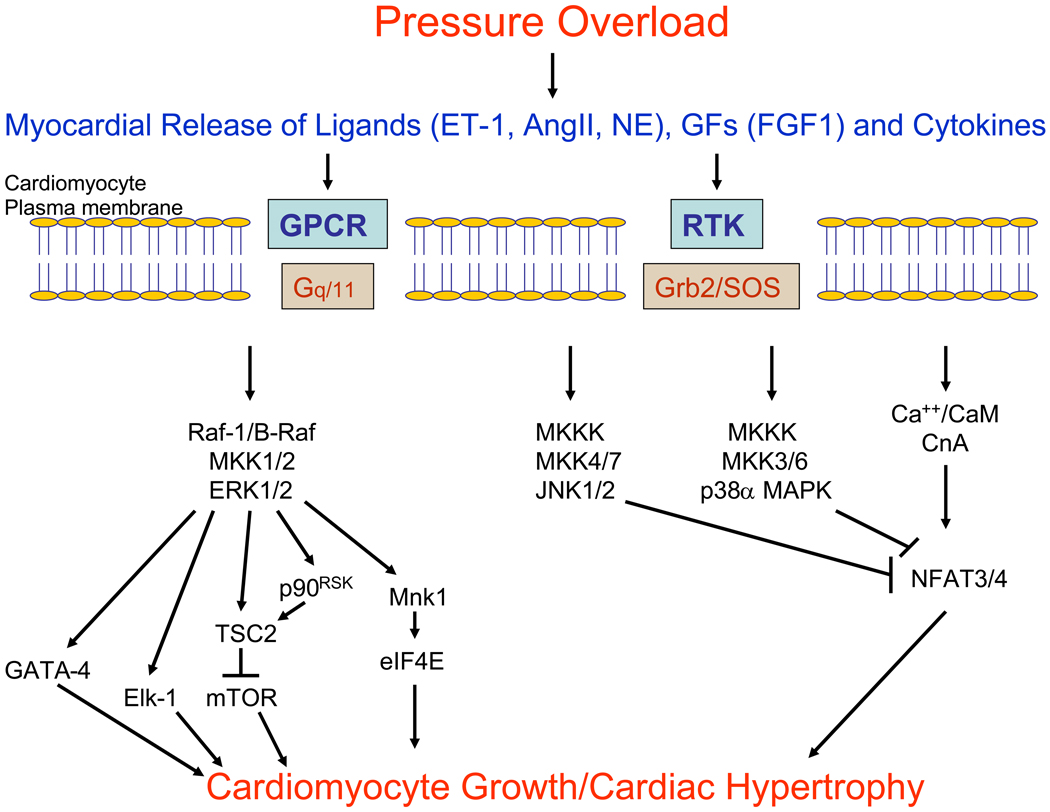Figure 1.
Model of the role of MAPK cascades in cardiomyocyte hypertrophy. In response to pressure overload, there is an intramyocardial release of ligands such as endothelin-1 (ET-1), angiotensin II (AngII) and norepinephrine (NE), growth factors such as fibroblast growth factor 1 (FGF1), and cytokines. These extracellular factors bind to and activate transmembrane G protein-coupled receptors (GPCR), receptor tyrosine kinases (RTK) and cytokine receptors (not depicted). Activated transmembrane receptors, in turn, directly activate intracellular signaling proteins, including G proteins (Gq/11) and the Grb2/SoS complex that promote activation of MAPK cascades and the Ca++/Calmodulin (CaM)-Calcineurin A (CnA)-NFAT3/4 cascade. Activation of these signaling cascades modulates the growth of cardiomyocytes in the manner depicted. Specifically, ERK MAPK phosphorylates a variety of targets that may contribute to cardiomyocyte growth, including the transcription factors Elk-1 and GATA4, and several proteins that regulate the translational machinery, including tuberin (TSC2 gene product), Mnk1 and p90RSK. On the other hand, JNK and p38 MAPK phosphorylate NFAT family members, resulting in inhibition of the calcineurin-NFAT hypertrophic pathway.

